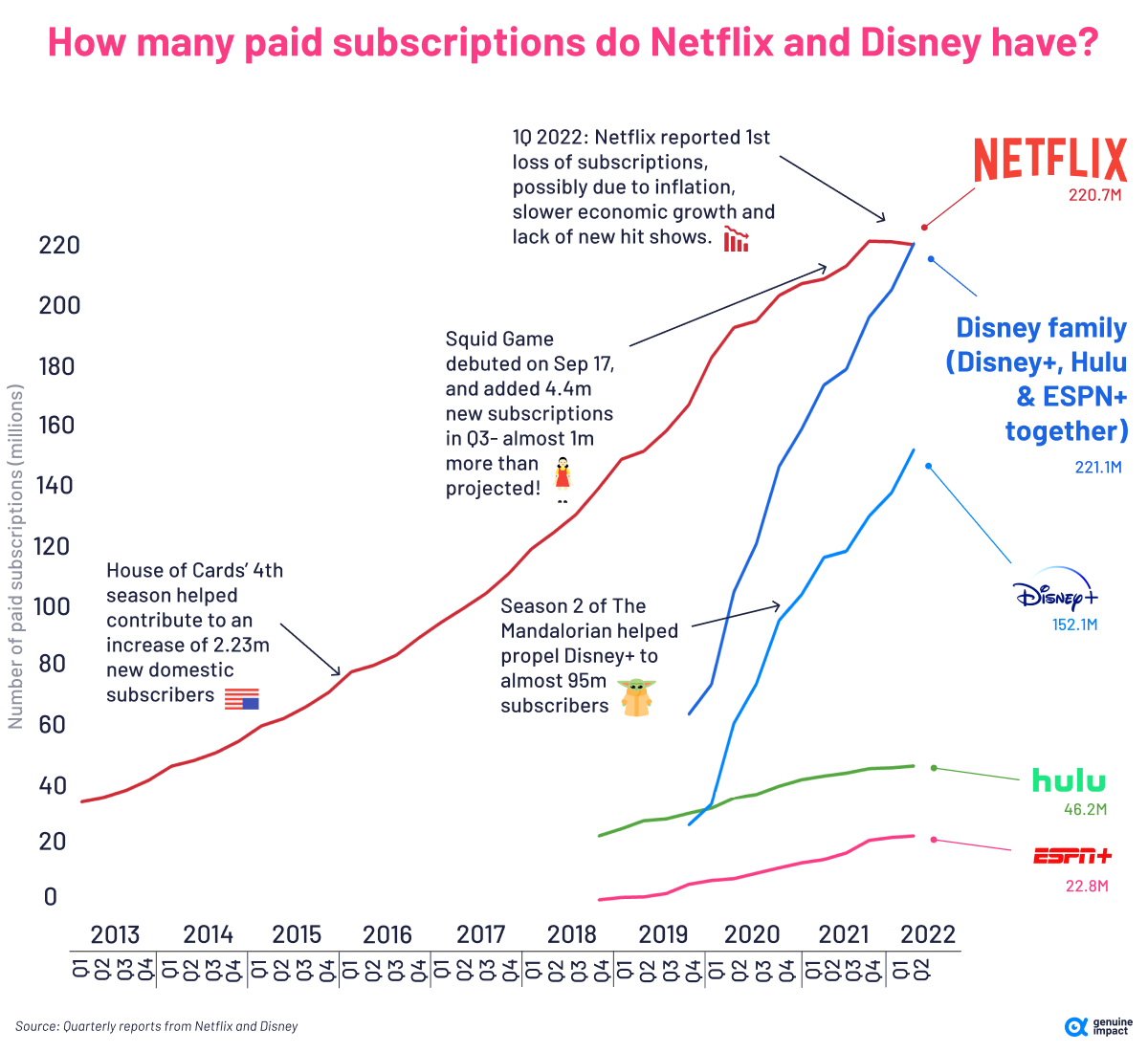Netflix Vs Disney: Who’s Winning The Streaming War?
(Click on image to enlarge)

Netflix (NFLX) is well-known as one of the pioneers of mass-market video streaming. The service has become so ubiquitous that the word “Netflix” is now synonymous with watching a movie or television show.
But, while it’s one of the most recognized streaming platforms in the world, has it been able to maintain its dominant position in the industry now that more competitors have entered the fray?
This graphic by Truman Du shows how Disney’s (DIS) streaming empire (Disney+, Hulu, and ESPN+) has quickly gained subscribers and is giving Netflix a run for its money.
Netflix: The Beginning
Founded in 1997, Netflix started out as mail-order DVD rental company. One of the co-founders Reed Hastings told Fortune Magazine that he got the idea for Netflix after he was charged a $40 late fee for a VHS he’d rented out.
By 2007, Netflix had evolved from a relatively modest DVD rental company into a ground-breaking subscription-based streaming service. While there were a few other streaming platforms at the time, Netflix had a significant first-mover’s advantage, operating on a subscription model and acquiring a wide pool of distribution rights from different studios.
This allowed the company to grow rapidly and establish itself as an industry leader. From 2007 to 2022, Netflix’s subscriber base grew from 7 million to 221 million, nearly 3,000%.
When Did Disney Enter the Scene?
The Walt Disney Company got involved in the streaming industry in 2009 when it first joined Hulu as a minor stakeholder, but became more directly invested in 2016 when it bought a 33% stake in BAMTECH Media, a video streaming technology company.
Disney eventually bought a majority stake in BAMTECH Media and in 2018, the company rebranded to Disney Streaming Services. In addition to launching Disney+ and ESPN+, Disney’s acquisition of 21 Century Fox gave the company a majority stake in other streaming platforms including Hulu and Star+.
While Disney arrived much later on the scene compared to Netflix, it didn’t take long for Disney’s platforms to gain traction. And as of Q2 2022, Disney’s streaming empire (Disney+, Hulu, and ESPN+) has more combined subscribers than Netflix, and are gaining at a rapid pace.
Netflix

Other streaming services like HBO Max and Amazon Prime Video also continue to pick up steam, which begs the question: has the Netflix empire started to tumble?
Recent Trouble With Netflix
In April 2022, Netflix shared its Q1 results which showed a loss of 200,000 subscribers. Though barely a fraction of its 200+ million subscribers, it was Netflix’s first drop in subscribers in over 10 years.
This sent the company’s share price plummeting below $200, the lowest since 2017. As of October 10, 2022, its share price still sits at $230, over 30% down from before the Q1 announcement in April 2022.
But change for the company is on the horizon. Netflix has announced that it plans to launch a cheaper, ad-supported service in November—something that other streaming platforms like Peacock and Paramount+ have already been offering customers for a few years.
More By This Author:
Infographic: Markets Comparing the Speed of U.S. Interest Rate Hikes (1988-2022)
Energy The Top 10 EV Battery Manufacturers in 2022
Animation: The Global Population Over 300 Years, By Country
Disclosure: None.




I've been surprised to say that Disney does seem to have taken very little time to reach Netflix's numbers. $DIS $NFLX.